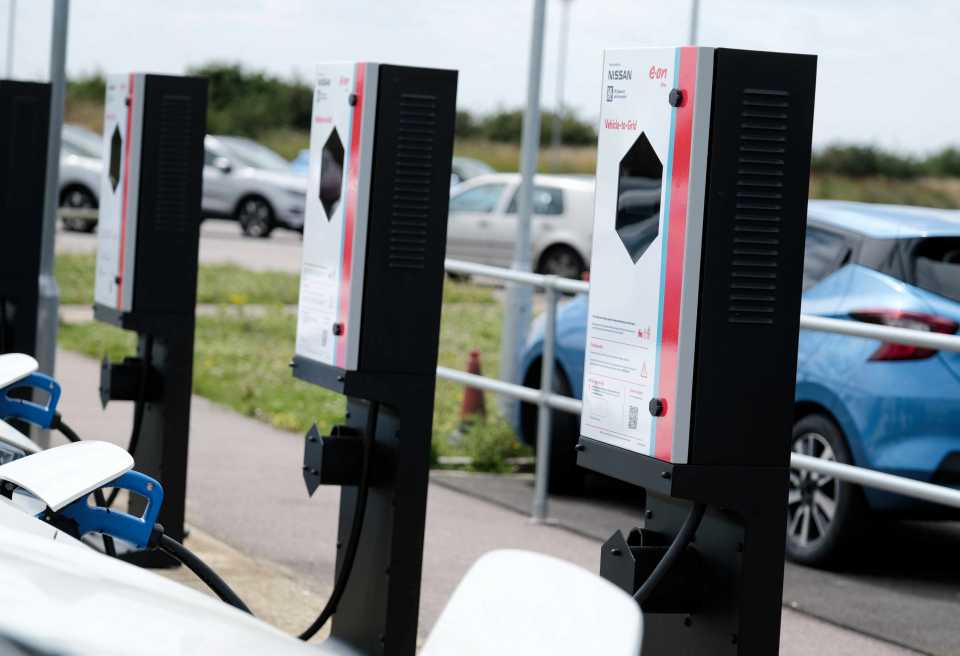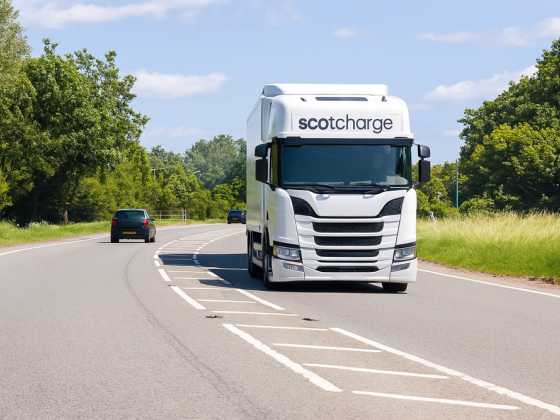E.ON and Nissan achieve significant V2G project milestone

A trial to demonstrate how electric vans and cars could play a role in supporting the UK grid and provide a profitable solution for business fleets has reached a major milestone with 20 vehicle-to-grid (V2G) chargers deployed.
The install at Nissan’s European Technical Centre in Cranfield is the first in a large-scale V2G trial by E.ON and Nissan and is co-funded by Innovate UK. The project will test and demonstrate how storing and sharing electricity in fleet vehicles’ batteries can generate additional revenue for participating companies as well as supporting the power grid.
Having validated the technology at Nissan’s Cranfield site, the project is now recruiting further participants for the trial and plans to deploy V2G chargers for organisations across the UK.
V2G technology allows electricity to flow in both directions to and from electric vehicle batteries, allowing energy stored in the battery to be sold back to the grid when demand for power is high. Vehicles can then charge when demand is lower or renewable generation is high, reducing reliance on fossil-fuelled generation, giving V2G a role in carbon reduction efforts.
The technology can also release capacity on the electricity networks which distribute power around the country. In collaboration with UK Power Networks, the trial will go on to explore opportunities for customers to earn revenues from this as a service.
Luke Ellis, V2G Programme Manager with E.ON UK, said: “Now that we’ve proven the technology’s capabilities with these 20 installs, we’re a step closer to bringing it to market. This is about commercialising a vehicle’s bi-directional charging capabilities, with clear advantages for businesses either already with a fleet of electric vehicles or those that are ready to make the transition to electric, and demonstrates how E.ON is providing solutions for customers that will help make the air cleaner.
“Operating an electric fleet means already contributing to the net zero emissions target and saving money through local clean air zone exemptions; integrating your fleet with V2G technology brings greater cost savings and the chance to earn extra revenue. Fleet vehicles which sit idle overnight, or even during the working day, could see their batteries charged when demand is low, with the energy exported when demand is high, but still be charged and ready for use when required.
"V2G technology brings with it wider environmental benefits for society as a whole. It can be considered ‘carbon negative’ for its potential to reduce or even remove the need for fossil-fuelled generation to be fired up at times of peak electricity demand.”



